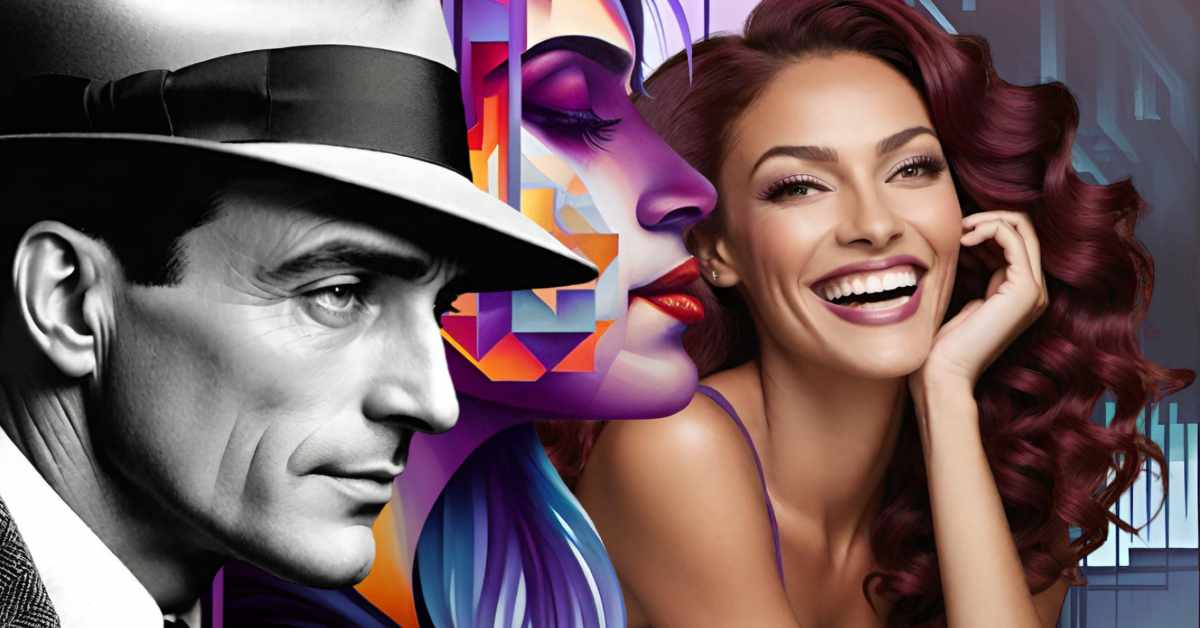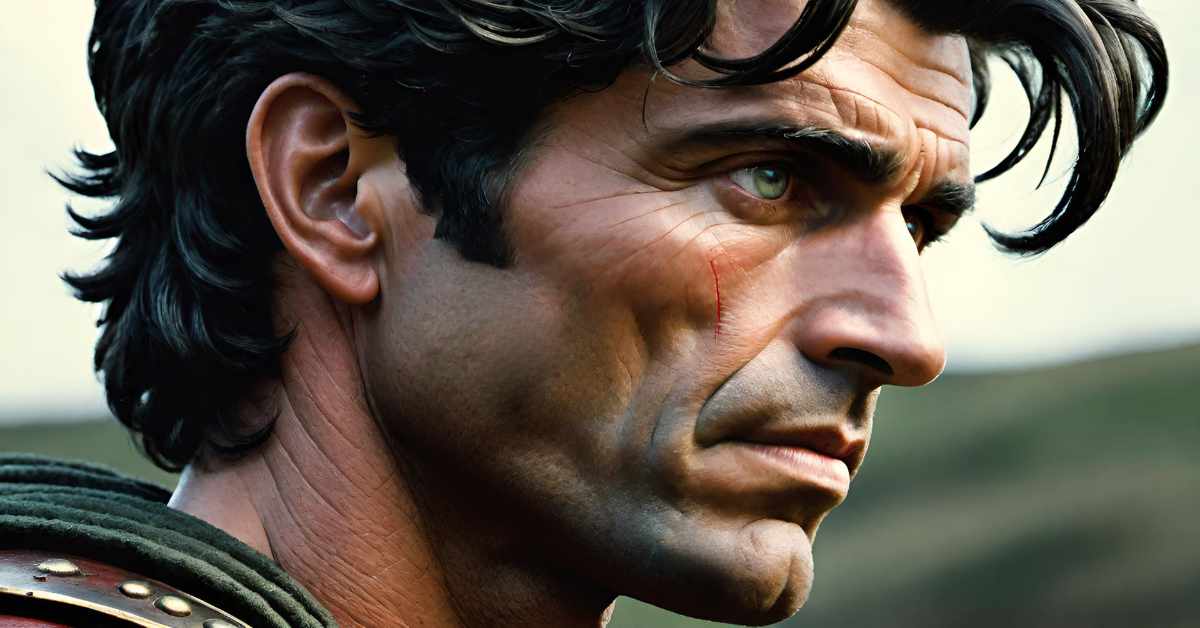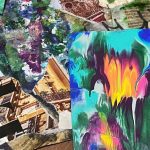How to Create Unique and Varied AI-Generated Portraits: A Guide for Creatives

Although I highly recommend collaborating with a portrait artist or photographer, there may be times when that’s not possible for various reasons.
AI-generated portraits can be an excellent tool for character studies, design references, or as elements for collage and composite art. However, many AI-generated images often look generic or lack originality, especially when the prompts used are simple or unimaginative. In this post, we’ll explore how to use creative thinking in crafting prompts to ensure your AI portraits are distinct and avoid being mere replicas of existing faces or styles.
While creative thinking in prompt writing is crucial, it’s worth noting that some AI image tools can be limited when it comes to altering facial structures, no matter how much you tweak the prompt. You might need to experiment with different tools to get the results you want. In my experience creating the images for this post, I found WOMBO Dream offered the most creative control over facial features.
Understand the Power of Descriptive Prompt Writing
When using AI tools for portrait creation, the prompts you write are everything. Instead of defaulting to common descriptors like “beautiful woman” or “old man with a beard,” delve into more specific and nuanced language:
- Describe Facial Features and Structure: Think beyond basic descriptions like “oval face” or “sharp jawline.” Use terms that consider the geometry and proportions of the face. For example:
- “A face with high, prominent cheekbones that curve gently into a rounded jawline.”
- “Deep-set eyes under a pronounced brow ridge, framed by thin, arching eyebrows.”
- Combine Unique Attributes: Consider combining unexpected features that don’t usually appear together, such as “a narrow nose with a wide-set, almond-shaped eye” or “a high forehead with a delicate, pointed chin.”
Avoid Over-Reliance on Specific Styles and Artists
One of the most important factors in generating unique AI portraits is avoiding overly referencing a specific artist’s or photographer’s style. To steer clear of unintentional imitation:
- Think in Terms of Movement and Era Rather than a Single Artist: Instead of asking for “a portrait in the style of Caravaggio,” describe the characteristics of Baroque portraiture more broadly—”dramatic use of chiaroscuro with deep shadows and warm highlights on the skin.”
- Focus on Ambiance and Mood: Specify the emotional tone or atmosphere of the portrait. For instance, “a melancholic figure illuminated by a single beam of moonlight, casting soft, elongated shadows” gives the AI room to interpret creatively without mimicking a specific work.
Incorporate Context and Background Narratives
Portraits are often more compelling when the subject is given a story or a unique context. You can incorporate elements of a character’s backstory or environment to influence the result:
- Character Backgrounds and Settings: Think about the character’s history, personality, and environment. “A weathered traveler from the far northern tundras, with windburnt cheeks, a thoughtful gaze, and strands of snow-flecked hair escaping from a fur-lined hood.”
- Use Implied Motion or Expression: Instead of describing a static face, use prompts that suggest movement or emotion—“a woman caught mid-laugh, with wind tousling her hair and her eyes crinkling at the corners.”

Leverage Uncommon Adjectives and Visual Metaphors
To break free from the norm, use adjectives and metaphors that are not commonly associated with portraiture:
- Create Vivid Mental Images: Use sensory language and abstract concepts—“a face that resembles the rough texture of a craggy cliffside, with crevices shadowed by the setting sun.”
- Experiment with Emotional Contradictions: For example, “eyes filled with the innocence of a child but framed by the weary, furrowed brows of a sage.”
Experiment with Unconventional Medium Descriptions
AI tools often respond interestingly when prompted with an unusual combination of mediums or materials:
- Combine Traditional and Digital Art Techniques: Instead of just asking for “oil painting,” consider “a portrait that merges oil painting textures with the crisp precision of vector art lines.”
- Material and Texture Focus: “A portrait crafted from woven strands of glowing fiber optics, reflecting light like a stained glass window.”
Embrace Abstract and Conceptual Descriptions
While AI excels at realism, it can also create compelling abstract or surreal representations:
- Blend Realistic and Surreal Elements: Prompts like “a face with skin resembling molten gold, with eyes that are deep blue galaxies swirling with tiny stars” can produce unique, otherworldly results.
- Deconstruct and Reconstruct Facial Elements: Describe faces in a way that encourages creative fragmentation or abstraction—“a face composed of mismatched geometric shapes, with an eye that’s a perfect circle and a mouth that forms a jagged zigzag.”
Use Custom Training Models and Iteration Techniques
If the AI tool allows, consider using custom-trained models that can combine multiple influences while steering clear of specific, recognizable styles:
- Combine Influences Subtly: Instead of training a model on “Van Gogh and Picasso,” train it on “post-impressionist color theories combined with cubist spatial deconstruction.”
- Iterative Refinement: Start with a broader concept, generate several iterations, and refine the prompt based on which elements stand out or need improvement.
It's All About Crafting Prompts for Unique AI Portraits
By thoughtfully crafting your prompts and focusing on the detailed, unique aspects of your character or concept, you can move beyond the “instant image” reputation of AI-generated art. The goal is to use AI as a tool for creative exploration, helping you generate portraits that are not only unique but rich in narrative, context, and emotion—perfect for character studies, design references, or artistic collage.
Remember, the AI is only as creative as the input you provide it. So, think outside the box, play with language, and embrace the unexpected.
More From Art and Design By Teresa Cowley
Experts In Agile PR Techniques
Agility PR Solutions empowers PR professionals to generate media coverage, track results, and showcase their impact. We’re passionate about helping them share their stories and seeing how they use our insights to grow and succeed. Supporting our clients is what drives us every day, and we’re proud to be ranked #1 for customer support and ease of doing business.






0 Comments